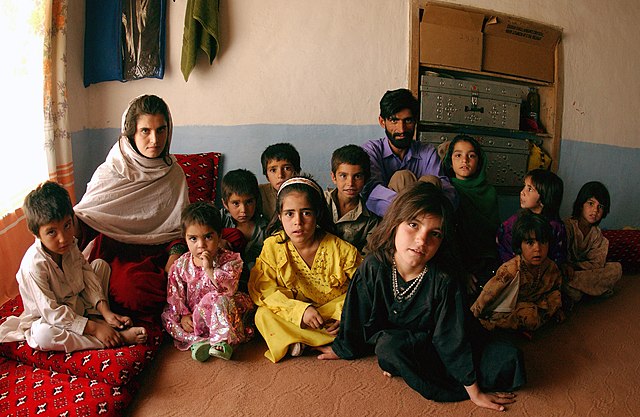History of Arabs in Afghanistan
The history of Arabs in Afghanistan spans over one millennium since the 7th century. Most of the early Arabs gradually lost their Arabic hegemony and ultimately mixed with the local population, though they are still considered a cognizably distinct ethnic group according to the Constitution of Afghanistan. Afghans who carry Sayed or Quraishi in their names usually claim Arab ancestry.
Mausoleum of an unknown Arab who was martyred during the Islamic conquest of Afghanistan in Kabul.
Names of territories during the Caliphate
The Shah-Do Shamshira Mosque in Kabul
Demographics of Afghanistan
The population of Afghanistan is around 41 million as of 2023. The nation is composed of a multi-ethnic and multilingual society, reflecting its location astride historic trade and invasion routes between Central Asia, South Asia, and Western Asia. Ethnic groups in the country include Pashtun, Tajik, Hazara, Uzbek, as well as smaller groups such as Baloch, Nuristani, Turkmen, Aimaq, Mongol and some others which are less known. Together they make up the contemporary Afghan people.
Sport fans inside the Ghazi Stadium in the capital of Kabul, which is multi-ethnic and the largest city of Afghanistan.
Young Afghans at a music festival inside the Gardens of Babur in Kabul.
An Afghan family from the Pashtun tribe in their home in Kabul
Gathering of students in 2006 at a school in Nangarhar Province.







